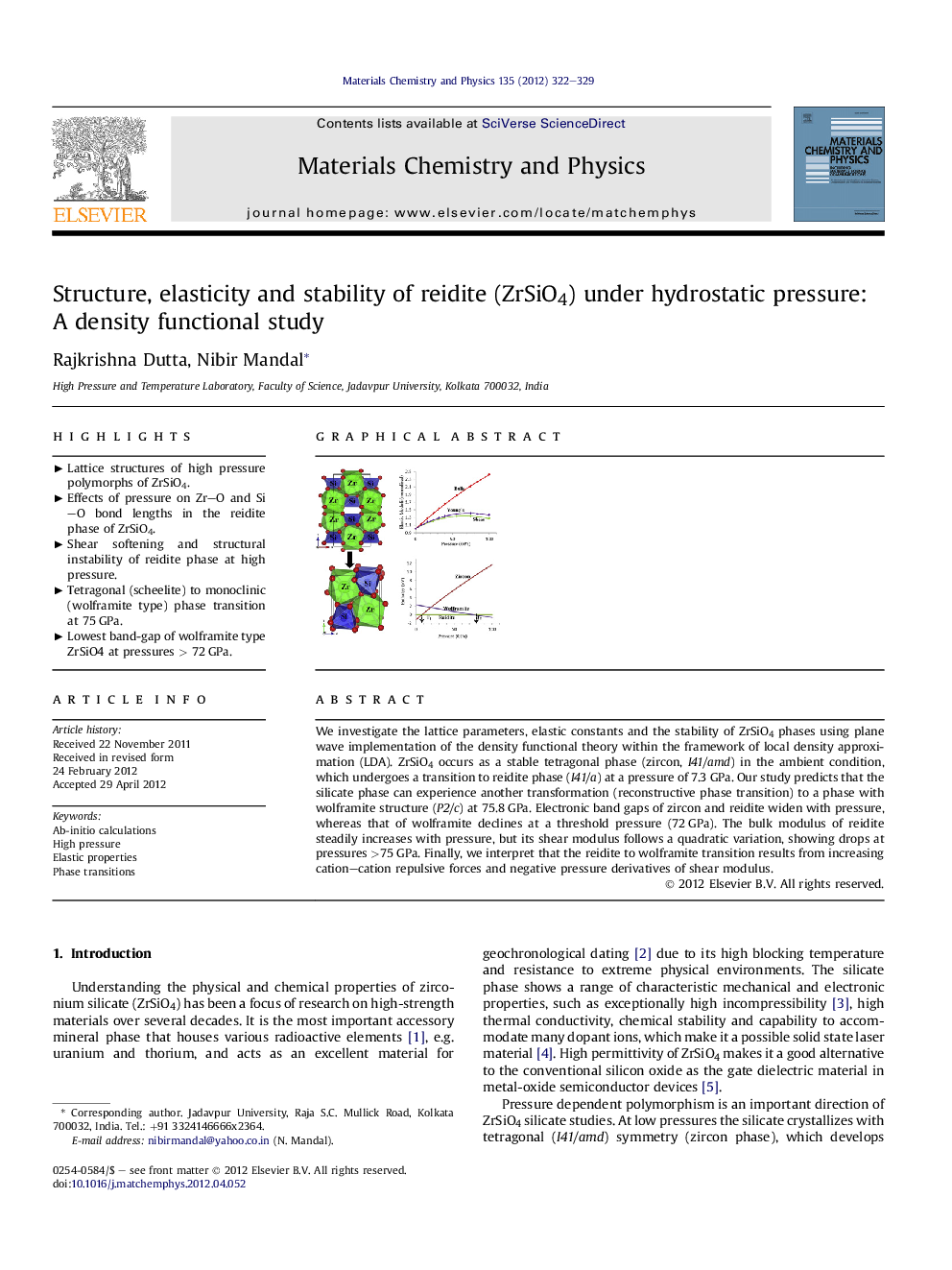| Article ID | Journal | Published Year | Pages | File Type |
|---|---|---|---|---|
| 1523071 | Materials Chemistry and Physics | 2012 | 8 Pages |
We investigate the lattice parameters, elastic constants and the stability of ZrSiO4 phases using plane wave implementation of the density functional theory within the framework of local density approximation (LDA). ZrSiO4 occurs as a stable tetragonal phase (zircon, I41/amd) in the ambient condition, which undergoes a transition to reidite phase (I41/a) at a pressure of 7.3 GPa. Our study predicts that the silicate phase can experience another transformation (reconstructive phase transition) to a phase with wolframite structure (P2/c) at 75.8 GPa. Electronic band gaps of zircon and reidite widen with pressure, whereas that of wolframite declines at a threshold pressure (72 GPa). The bulk modulus of reidite steadily increases with pressure, but its shear modulus follows a quadratic variation, showing drops at pressures >75 GPa. Finally, we interpret that the reidite to wolframite transition results from increasing cation–cation repulsive forces and negative pressure derivatives of shear modulus.
Graphical abstractConventional unit cell of reidite (top left) and wolframite (bottom left), Elastic moduli (top right) and phase transitions (bottom right) in zirconium silicate.Figure optionsDownload full-size imageDownload as PowerPoint slideHighlights► Lattice structures of high pressure polymorphs of ZrSiO4. ► Effects of pressure on Zr–O and Si–O bond lengths in the reidite phase of ZrSiO4. ► Shear softening and structural instability of reidite phase at high pressure. ► Tetragonal (scheelite) to monoclinic (wolframite type) phase transition at 75 GPa. ► Lowest band-gap of wolframite type ZrSiO4 at pressures > 72 GPa.
